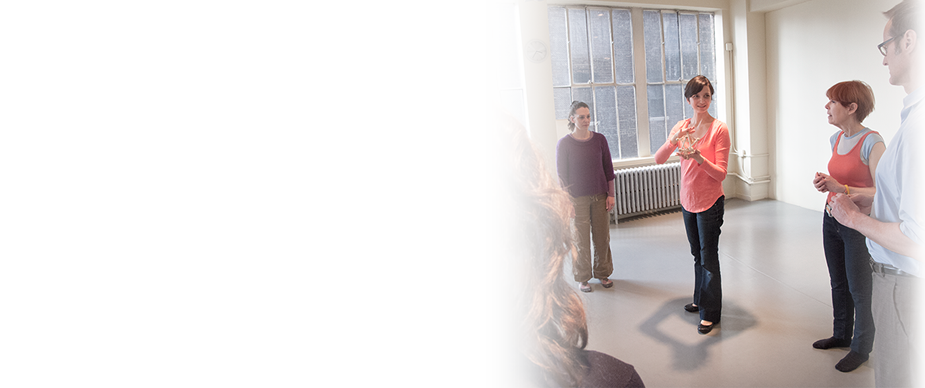Spatial Intent - Know where you are already going and then figure out where to go.
/Spatial intent is different from movement. It's not a position. It's not posture, but it determines our posture.
Our spatial intent is where
we are aiming ourselves and underpins everything we do. Spatial intent is usually unconscious.
I have a background in acting and I often ask my students what their "super-objective" is at any given moment when they are walking along the sidewalk in NYC. In acting, a character's super objective is their most basic fundamental intention that colors all other objectives and actions. When I ask this question, common responses are:
"To get where I'm going."
"To avoid bumping into people."
These examples are objectives, but more fundamentally, a person walking along the street has the intention to stay upright and to breathe. Many of us can take this for granted and let breathing and uprightness become relegated to background noise. We manage and get by. We keep breathing and we don't fall down. Generally, though people stay upright and breathe inefficiently, with much more effort than they need.
Why?
Because even though they are managing to stay standing, sitting, or to maintain whatever position or movement they wish to maintain in the face of gravity provided by planet Earth, they are aiming themselves down. Aiming down, diminishes our naturally ability to be springy, creates strain in the neck, back, shoulders and legs, and makes breathing more effortful.
People often search for solutions to problems such as an aching back, a sore neck, or tight shoulders and they search for the solutions outside of themselves. They try a new exercise, they switch jobs, or they do something relaxing. There is nothing wrong with any of these things, but they likely won't change that the person is chronically aiming themselves down in space.
Look at the cartoon image above. The character is eagerly looking for the right way to go, yet finds himself bewildered. There are many directions to take, but they aren't labeled and the paths they will lead to aren't clear. He's looking for something outside himself to point him in the right direction, but take a look at how he's standing and his body is compressed down and simple act of looking up to read the signs distorts his back.
Perhaps if he understood where he was already going (down) and resolved that issue, he would be able to read the signs and understand where they are pointing.
When people first begin Alexander Technique lessons, they are asked to slow down their movements, do do things more deliberately, and to learn to feel through the guidance of the teacher, where their spatial intent is. They then learn to use their own thinking and internal directing to shift that intention.
Acknowledging a downward intent and reversing it to aim yourself up is a milestone in achieving presence and clarity, feeling more confident, and releasing tension that causes strain-related pain.

